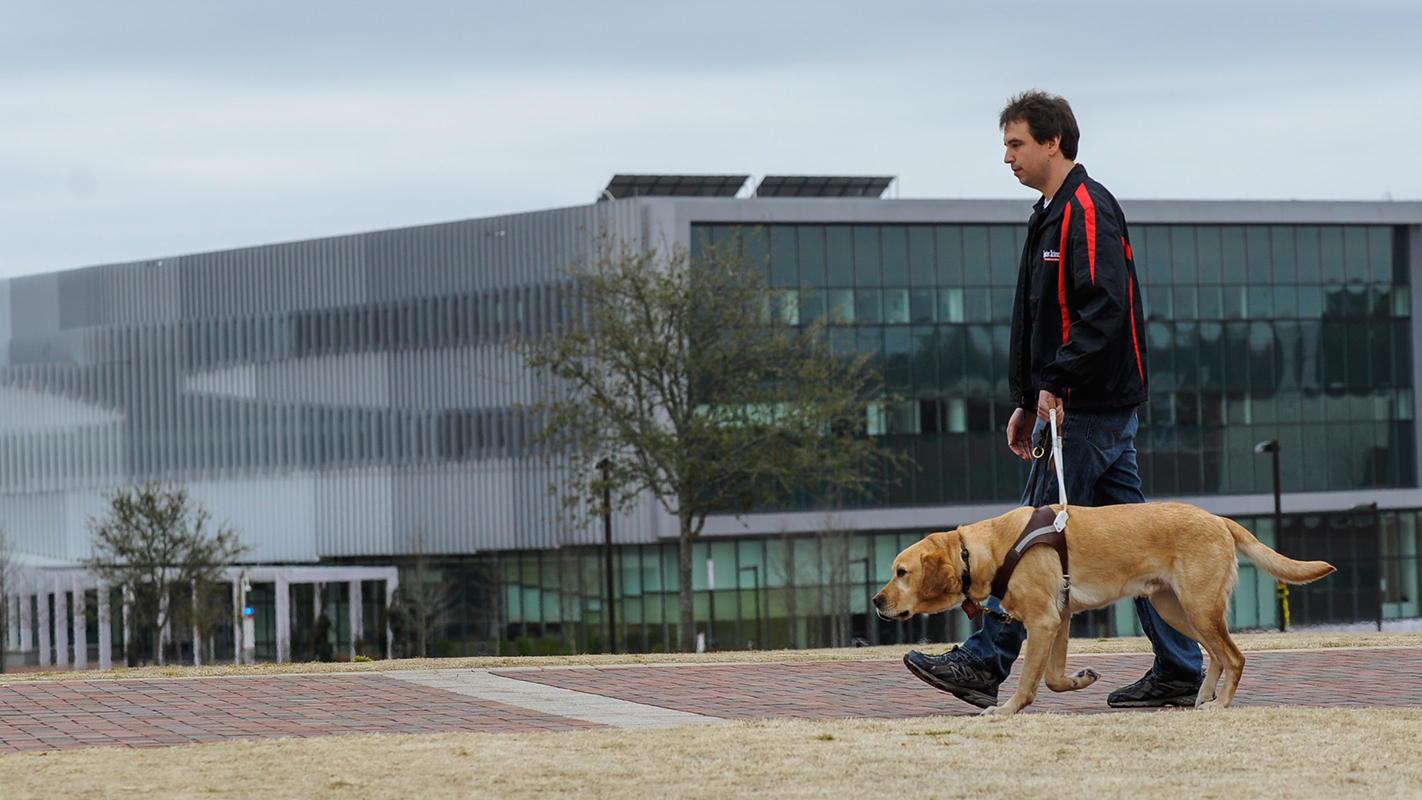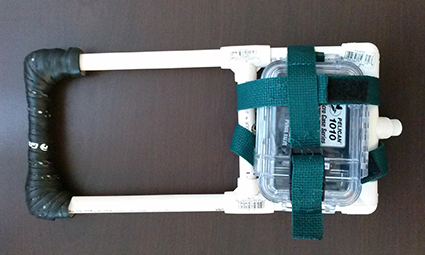New Tech Helps Handlers Monitor Health, Well-Being of Guide Dogs

For Immediate Release
Researchers at North Carolina State University have developed a device that allows people who are blind to monitor their guide dogs, in order to keep tabs on the health and well-being of their canine companions.
“Dogs primarily communicate through their movements and posture, which makes it difficult or impossible for people who are blind to fully understand their dogs’ needs on a moment-to-moment basis,” says David Roberts, an assistant professor of computer science at NC State and co-author of a paper describing the new technology. “This challenge is particularly pronounced in guide dogs, who are bred and trained to be outwardly calm and avoid drawing attention to themselves in public.”

To address this need, the researchers have developed a suite of technologies that monitor a dog’s breathing and heart rate and share the information with the dog’s handler.
“Our goal is to let guide dog handlers know when their dogs are stressed or anxious,” says Sean Mealin, a Ph.D. student at NC State and lead author of the paper. “This is important because it is widely believed that stress is a significant contributing factor to early retirement of guide dogs and other service animals. The technology may also be able to help handlers detect other health problems, such as symptoms of heat exhaustion.”
The issue is particularly important to Mealin, who is blind and works with his own guide dog, Simba.
The research team had previously developed monitoring technologies that are incorporated into a lightweight harness that can be worn by rescue or service dogs. The trick was to find a way to share that monitoring data with users who are blind – and to do so in a way that allows those users to act on the information.
“We didn’t want to give handlers an endless stream of information that would be difficult to interpret,” Mealin says.
So, the researchers developed a specialized handle that attaches to a guide dog’s harness. The handle is equipped with two vibrating motors.
One motor is embedded in the handle by the handler’s thumb, and vibrates – or beats – in time with the dog’s heart rate. When the dog’s heart rate increases, so does the rate at which the motor beats.
The second motor is embedded in the handle near the handler’s pinky finger, and vibrates in synch with the dog’s breathing. The vibration increases and decreases in intensity, to simulate the dog breathing in and out.
“We wanted to use electronic signals that intuitively make sense for the dog handlers,” Roberts says.
The prototype handle has been tested using simulated heart rate and respiratory data, and was found to be effective at accurately conveying information to users.
“We’re refreshing the design and plan to do additional testing with guide-dog handlers,” Roberts says. “Our ultimate goal is to provide technology that can help both guide dogs and their people. That won’t be in the immediate future, but we’re optimistic that we’ll get there.”
The paper, “Towards the Non-Visual Monitoring of Canine Physiology in Real-Time by Blind Handlers,” is being presented Nov. 16 at the Second International Congress on Animal Computer Interaction, in Johor, Malaysia. The paper was co-authored by Mike Winters, Ignacio Domínguez, Alper Bozkurt and Barbara Sherman of NC State; and by Michelle Marrero-García, a high school student who worked on the project as part of a summer program at NC State. The work was done with support from the National Science Foundation under grants DGE-1252376 and 1329738.
-shipman-
Note to Editors: The study abstract follows.
“Towards the Non-Visual Monitoring of Canine Physiology in Real-Time by Blind Handlers”
Authors: Sean Mealin, Mike Winters, Ignacio X. Domínguez, Alper Bozkurt, Barbara L. Sherman, and David L. Roberts, North Carolina State University; Michelle Marrero-García, CROEM Specialized Residential School
Presented: Nov. 16, Second International Congress on Animal Computer Interaction, Iskandar, Johor, Malaysia
Abstract: One of the challenges to working with canines is that whereas humans are primarily vocal communicators, canines are primarily postural and behavioral communicators. It can take years to gain some level of proficiency at reading canine body language, even under the best of circumstances. In the case of guide dogs and visually-impaired handlers, this task is even more difficult. Luckily, new technology designed to help monitor canines may prove useful in helping handlers, especially those with visual impairments, to better understand and interpret what their working partners are feeling or saying. In prior work a light-weight, wearable, wireless physiological monitoring system was shown to be accurate for measuring canines’ heart and respiratory rates. In this paper, we consider the complementary problem of communicating physiological information to handlers. We introduce two nonvisual interfaces for monitoring a canine’s heart and respiratory rates, an audio interface and a vibrotactile interface. We also present the results of two initial studies to evaluate the efficacy of the interfaces. In the first study we found that many participants were more confident in detecting changes in heart and respiratory rate using the audio interface, however most of the time they were just as accurate with the vibrotactile interface with only a slight increase in detection latency.
- Categories:


